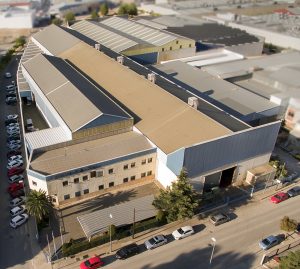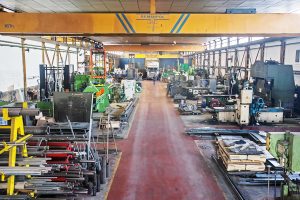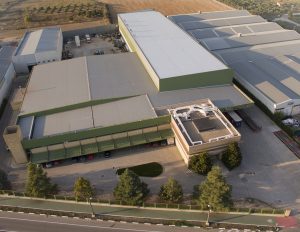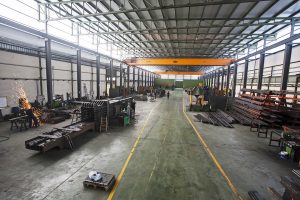History
JOVISA, S.L. began trading as a small garage repairing tractors in the village of Muro de Alcoy; they travelled between villages repairing mechanic breakdowns when necessary. On one occasion a customer asked them a specific machine; they invested the money in producing a small scale model of the machine they required. This took a year to develop and manufacture the new machine, and in 1970 they presented it: a continuous press to bale paper and cardboard.
At the beginning JOVISA, S.L. only had one factory where they manufactured hydraulic presses and continued to repair tractors and cars. Over a period of time the demand for the baling presses increased and the repairs to tractors etc. decreased. They took the decision to concentrate on the manufacture and development of hydraulic presses.
JOVISA, S.L., today try to offer the best customer service in a quick and effective way, giving a personal way to experienced and professional personnel. With the manufacture of these machines, we are endeavouring to protect the environment by continually developing and improving the latest generation of machinery. JOVISA has progressed to become a modern Company incorporating all the latest technologies and several controls of quality.
Safety and Health Regulations
All our machines comply with 1.7.4.2 of European Directive 2006/42/ CE; we manufacture the machines to these standards and with internal control of production. They comply the minimum requirements of safety and health that are demanded by the Directive 2006/42/ CE, by the European Parliament and by the Council, 17 May 2006, “Approximation of member states regarding machinery” and the requirements of Directives 2004/108/CE, about Compatibility, Electromagnetic and Directive 97/23/CE, about Equipment under pressure and Directive 73/23/CEE about low tension.
Also to fulfil quoted Directives, the manufacturer in question applies the following regulations:
- UNE-EN ISO 4413:2011. Hydraulic transmissions. General Regulations and safety requirements for the systems and their components. (ISO 4413:2010)
- UNE EN 1037. Safety in machines. Prevention in front of an unexpected starting.
- UNE EN 1088. Safety in machines. Devices of interlocking they are associated with any shelter. Principles of the design and selection.
- UNE EN ISO 14122. Safety in machines. Means of access to machines and industrial installations (part 1, 2, 3, 4).
- UNE EN ISO 60204-1. Safety in machines, Electric equipment of machines.
- EN ISO 14121-1:2007. Safety in machines. Evaluation of risk. Part 1: Principles (ISO 14121-1:2007)
- UNE-EN ISO 12100:2012. Safety in machines. General principles for the design. Evaluation of risk and reduction of risk. (ISO 12100:2010)
- UNE-EN 614-1:2006+A1:2009. Safety in machines. Principles of ergonomic design. Part 1: Terminology and general principles.
- UNE-EN 842:1997+A1:2008. Safety in machines. Visual signals of danger. General requirements, design and tests.
- EN ISO 13857:2008. Safety in machines. Safety distances to foresee the catching of upper and lower members (ISO 13857:2008).
- UNE-EN 981:1997+A1:2008. Safety in machines. Systems of danger signals and auditory and visual information.
- UNE-EN 953:1998+A1:2009. Safety in machines. Shelters. General requirements for design and manufacture of fixed and mobile shelters.
- UNE-EN ISO 13850:2007. Safety in machines. Stop of emergency. Principles for the design. (ISO 13850:2006).
- UNE EN 60947-5-5. Equipment of low tension. Part 5-5: Equipments and elements of switching for circuits of control. Electric devices of emergency stop with mechanic interlocking.
- UNE-EN 16252:2013. Machines to compact wastes or recyclable fractions. Presses for horizontal pressing. Safety requirement.
- UNE-EN ISO 3746:2011. Acoustic. Determination of levels of acoustic power and levels of acoustic energy coming from sources of noise from acoustic pressure. Method of control using a surface of enveloping measure over a reflective plan. (ISO 3746:2010).
- RBT. Electrical technician regulation for low tension.
Obeying all these regulations, we ensure our products can be installed anywhere preserving the interest of different industries they are destined to.




